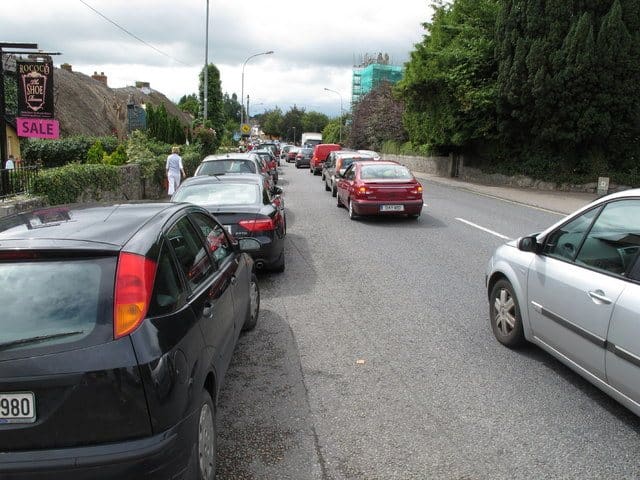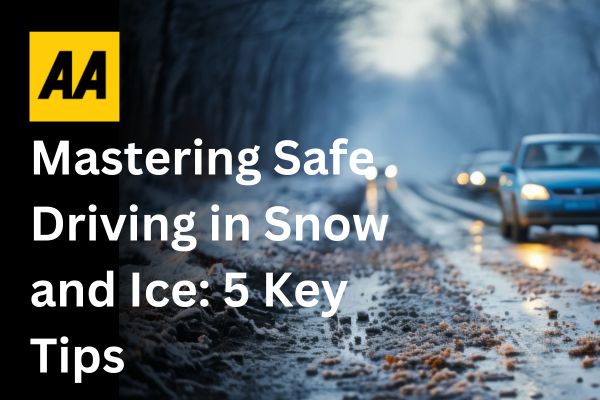If you’re the type of person who says to yourself, ‘How much should I increase my braking distance? How long does it take to stop? What’s a tracker mortgage?’ you ask a lot of good questions. While we may not be experts on the mortgage market, we do everything there is to about stopping distances.
In today’s blog, we’re going to “brake” it all down for you so you can be more confident when driving on Irish roads.
THE TWO-SECOND RULE
In the Rules Of The Road handbook, drivers are advised to ensure they are at least two seconds behind the vehicle in front of them. They even have a little test you can use to gauge this. If you’re driving on a dry road, choose a fixed point ahead, such as a street light. When the vehicle in front passes that point, say out loud, ‘Only a fool breaks the two-second rule’. This will help you work out if you’ve enough distance between you and the vehicle ahead. If you have already passed your chosen point by the time you get to the end of the sentence, you are driving too close to the vehicle in front and need to pull back.
BRAKING DISTANCE IN WET WEATHER
If the road is wet, you must double this distance, i.e. repeat ’only a fool breaks the two-second rule’ twice. When driving in snowy, foggy, or icy conditions, say, ‘Only a fool breaks the two-second rule’ four or five times. That’s because it takes longer to come to a complete stop when roads are wet or icy. You should always adjust your driving style to match the conditions; remember that hailstones, in particular, can suddenly change driving conditions.
STOPPING DISTANCES AT DIFFERENT SPEEDS
The distance it takes to stop entirely might surprise you: if you are driving on a dry road surface at 50kmph, it will take 25m to stop, just over the length of two double-decker buses. At 120kmph in wet conditions, you’ll have travelled 169m by the time you come to a complete stop: that’s about the length of 17 buses.
OTHER FACTORS THAT AFFECT STOPPING DISTANCE
However, it’s not as simple as seeing a hazard ahead and applying your brakes. Several factors affect stopping distance:
WHAT IS PERCEPTION DISTANCE IN DRIVING
According to the RSA, the length of time it takes us to perceive a hazard and realise it’s a hazard (that we need to do something about) can take between 0.5 and 0.25 of a second. That’s shorter than it takes to read this sentence.
WHAT IS REACTION TIME IN DRIVING
You then need to consider your reaction time which is how quickly you can act in relation to the hazard ahead. The amount of time it takes from taking your foot off the accelerator to press the brake pedal can range from 0.25 to 1.5 seconds. Remember, too, that both your reaction and perception times can be affected by things like tiredness, poor concentration and drugs and alcohol. To dazzle you with more facts and figures: ‘A perception and reaction time of four seconds at 100 km means a car travels 110 metres before the brakes are applied’. This is longer than the height of Big Ben in London.
BRAKES AND TYRES
But wait, there’s more. Aside from the human element, you also have to consider the vehicle condition you are driving. Every vehicle takes time to react once the brake pedal has been tapped. This will depend on its condition, especially the condition of the braking system. The final thing to bear in mind is the braking capability of your vehicle, which relies on brakes, the tread and grip of your tyres, the road surface, brakes, the weight of the vehicle and the vehicle’s suspension. You can check the tread of your tyres by placing a €1 coin in the grooves – if you can see the gold rim, they might need replacing!
This blog about stopping distances is one of a series on safe driving and road use. You can check out our other post about how to correctly use your car lights here.
If you are worried about your stopping distances and making sure you are always protected, check out AA Car Insurance. Whether you opt for Third Party or Comprehensive cover, from windscreen repair through AA-approved repairers to 10 days on a courtesy car, our insurance goes a little further.










